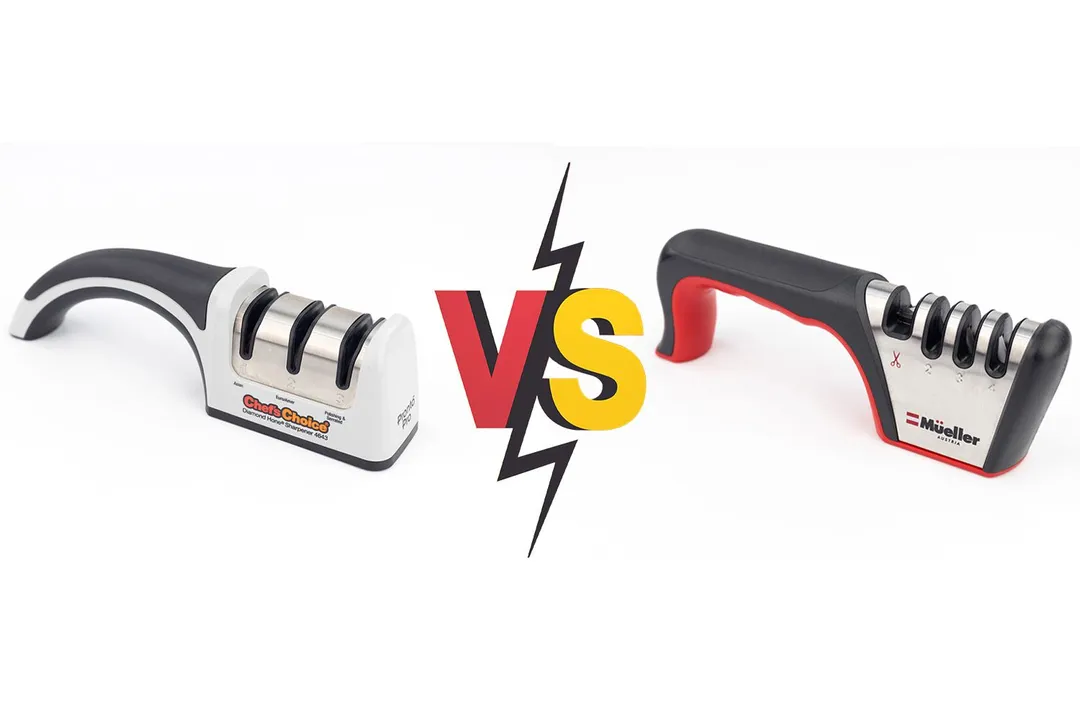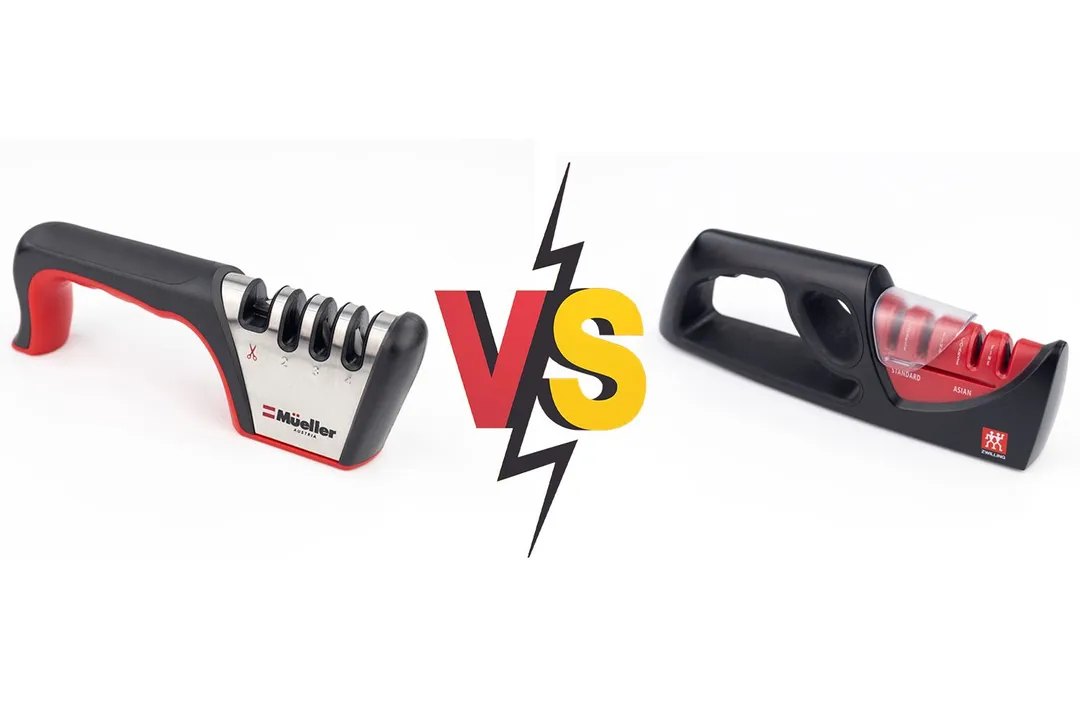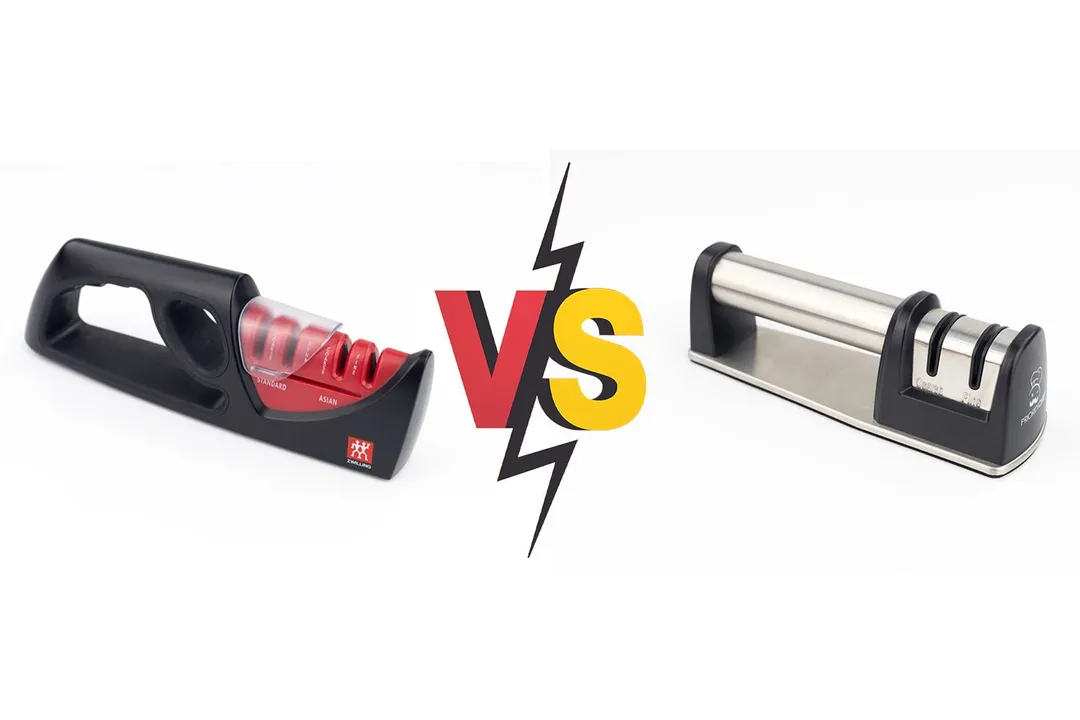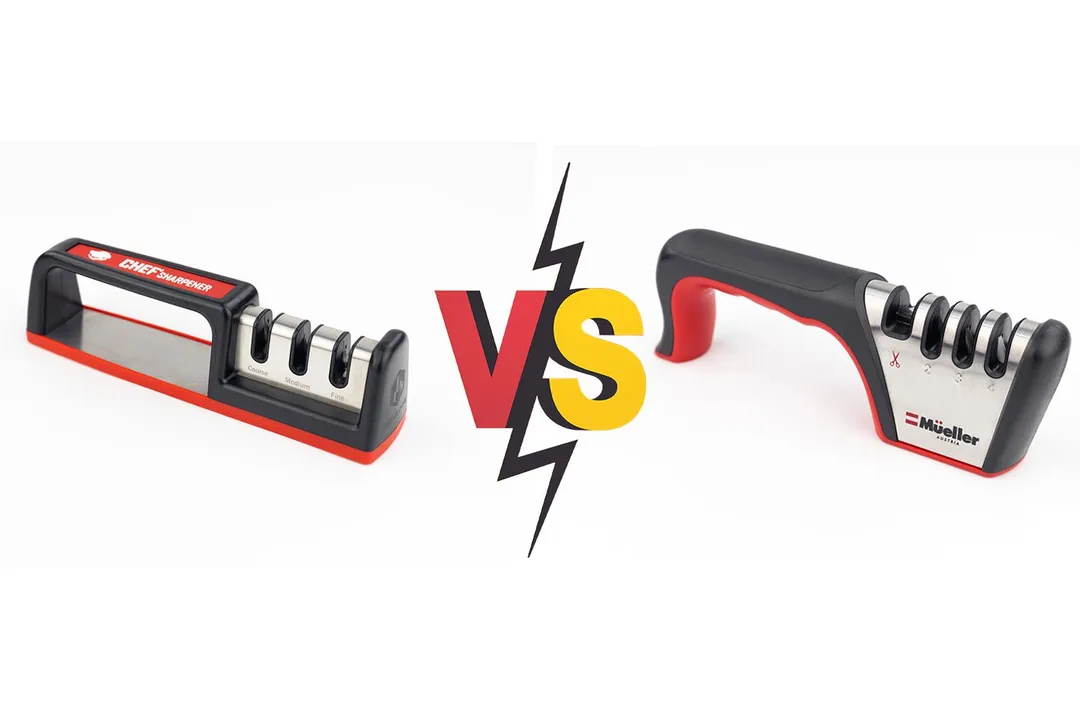Our recommendations are made independently through Research & Testing. We may receive commissions from purchases made via our links.
Mueller 4-Stage vs. PriorityChef 2-Stage Sharpener Side-by-Side Comparison
Wondering which one to choose between the Mueller 4-stage and the PriorityChef 2-stage sharpeners? Here’s our comparison and analysis.
Mueller 4-Stage
Tested Using Methodology v1.1PriorityChef
Tested Using Methodology v1.1
Overall Verdict
The Mueller has a stronger build and more sharpening slots but we’re leaning toward the PriorityChef for better edge retention and knife longevity.
The Mueller boasts a large and robust body with one sharpening slot for scissors and three for kitchen knives. It produced a sharp edge quickly but not without shaving off a great deal of material. The edge ended up overly narrow and rough, leaving it prone to chipping.
The PriorityChef is more modest both in size and build quality. Fortunately, its working section does the business much better than the rest of its body suggests. Sharpening to the same speed and level as the Mueller, its two abrasive discs only removed a fraction of the amount of knife material. It also gave us a much finer and smoother knife edge.
Pros & Cons
- Strong construction, pretty coloring
- Quick sharpening
- Scissor slot
- Ease of use
- Modest height, low center of gravity
- Full, flat base
- Gimmick-free design
- Great edge retention
- High center of gravity
- Harsh on the knife edge
- Cheap base pad
- Small slot openings
Key Specs
Where to Buy
*You help support HealthyKitchen101's product testing and reviews by purchasing from our retail partners.
Analysis and Test Results
Performance
Sharpening Time to Cut a Lemon
Material Retention
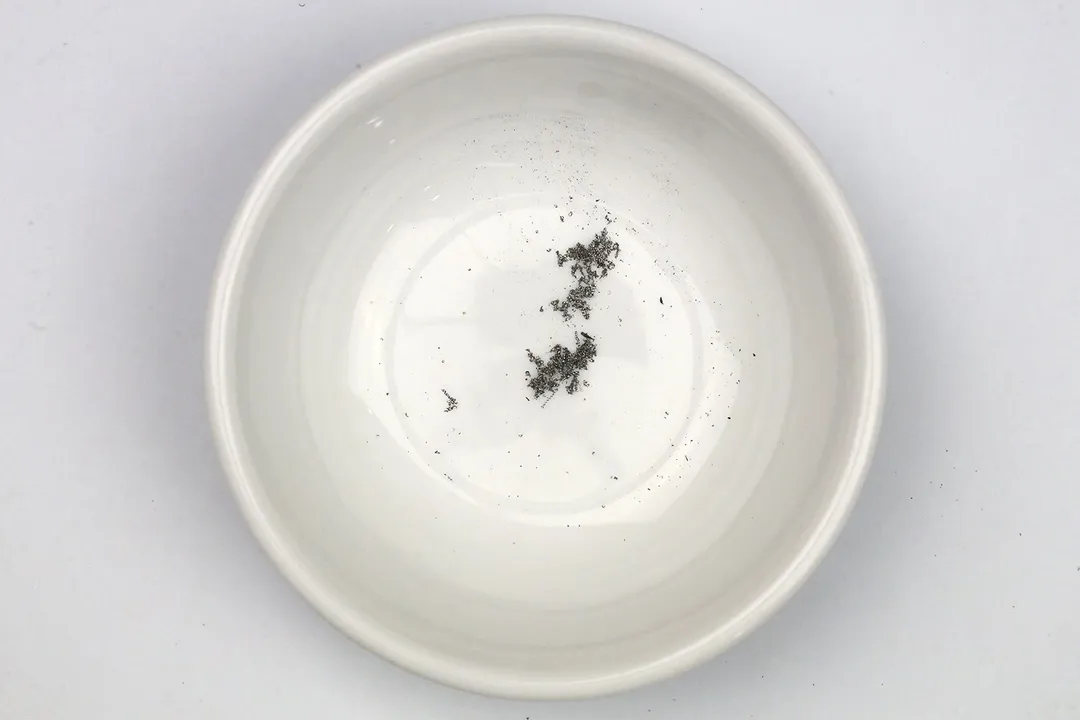
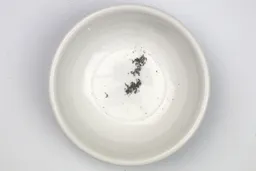
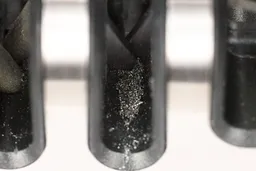
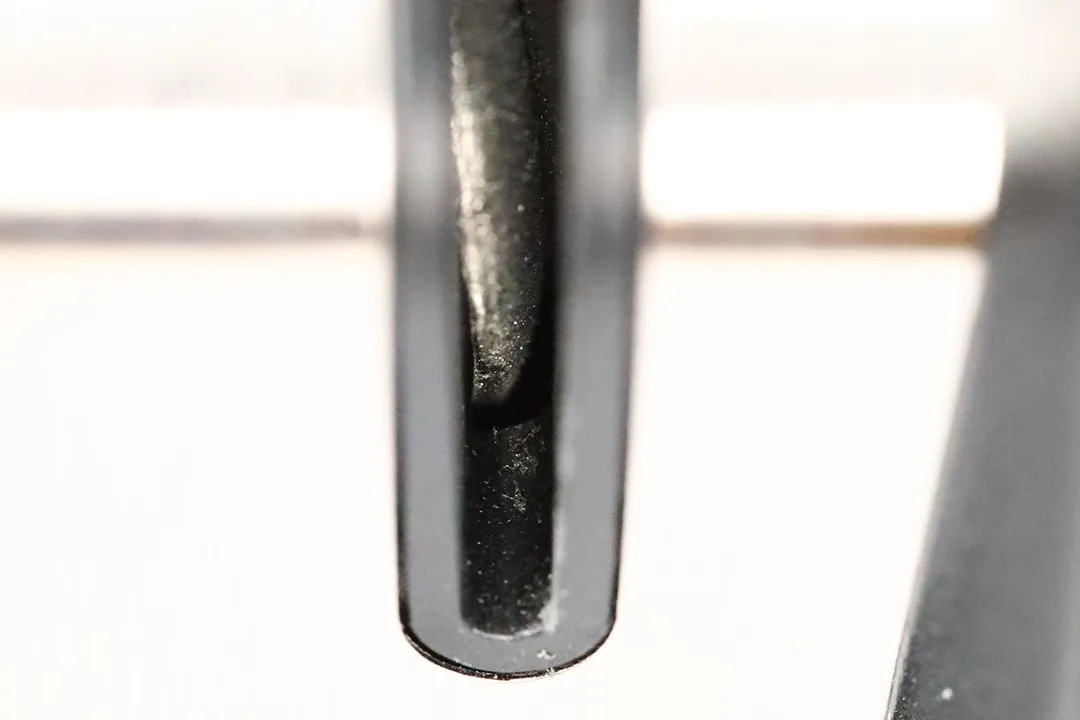
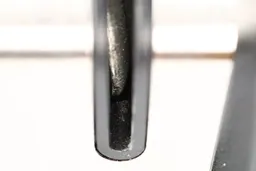
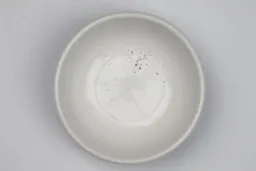
Maximum Sharpness Achieved
Edge Smoothness
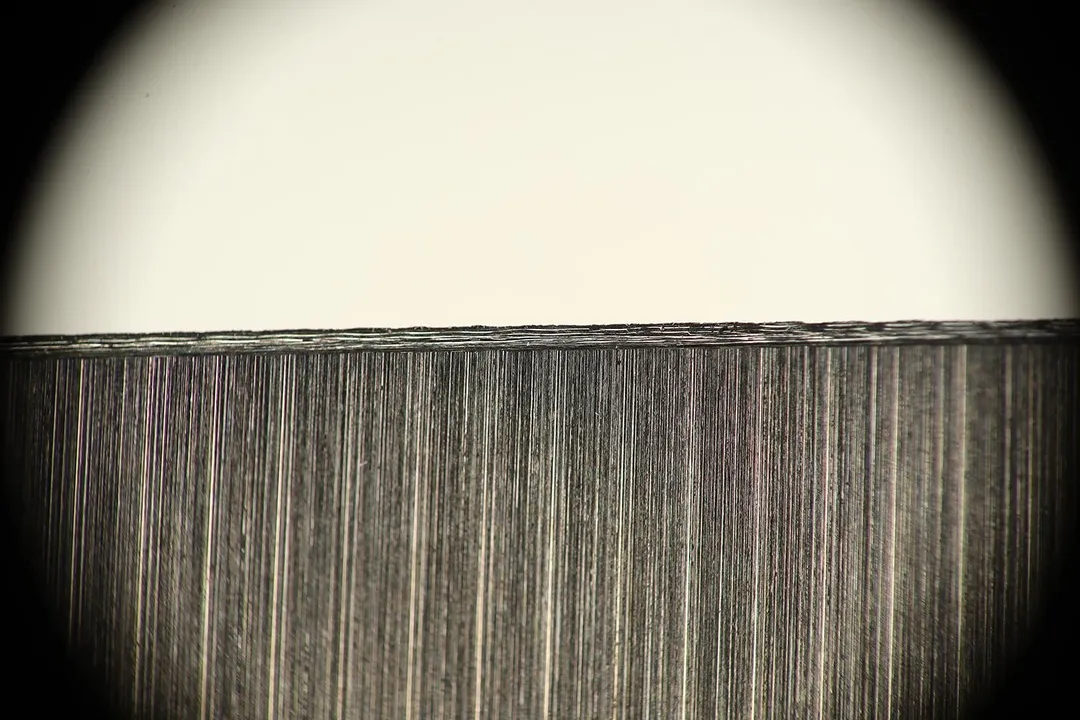
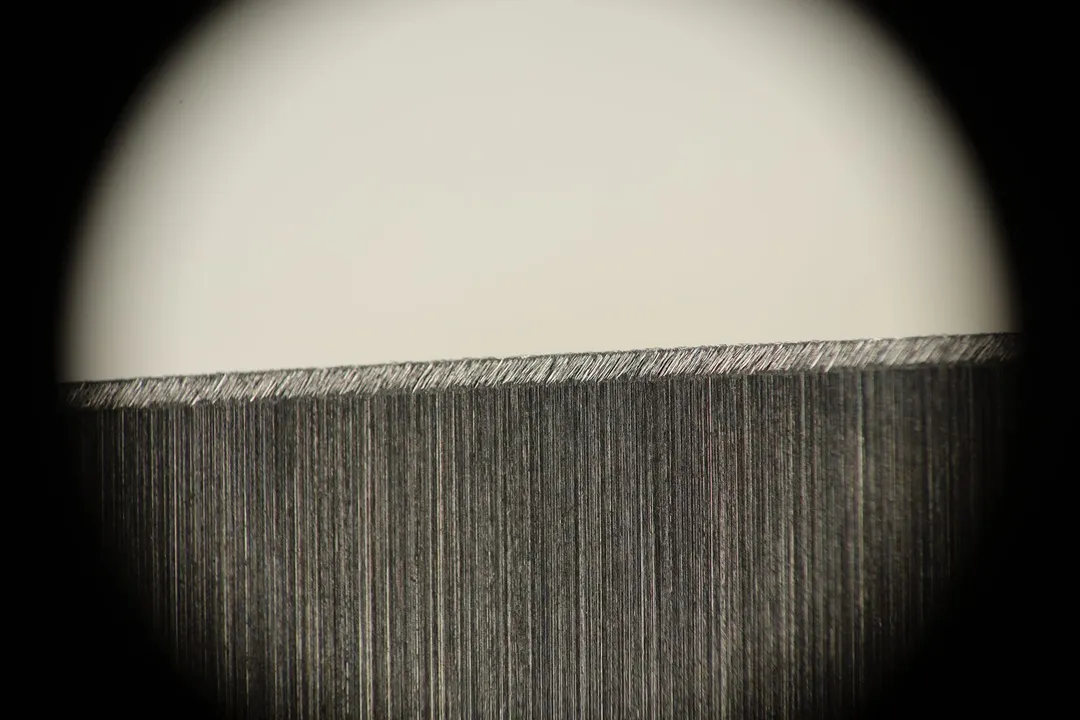
Design
In the Box
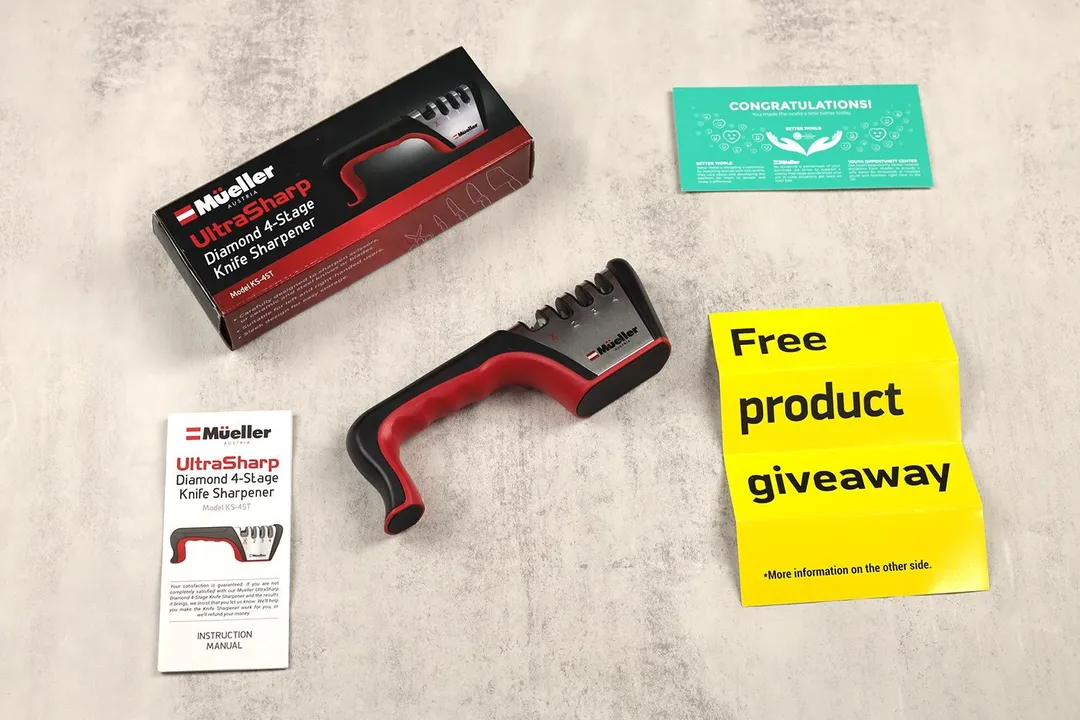
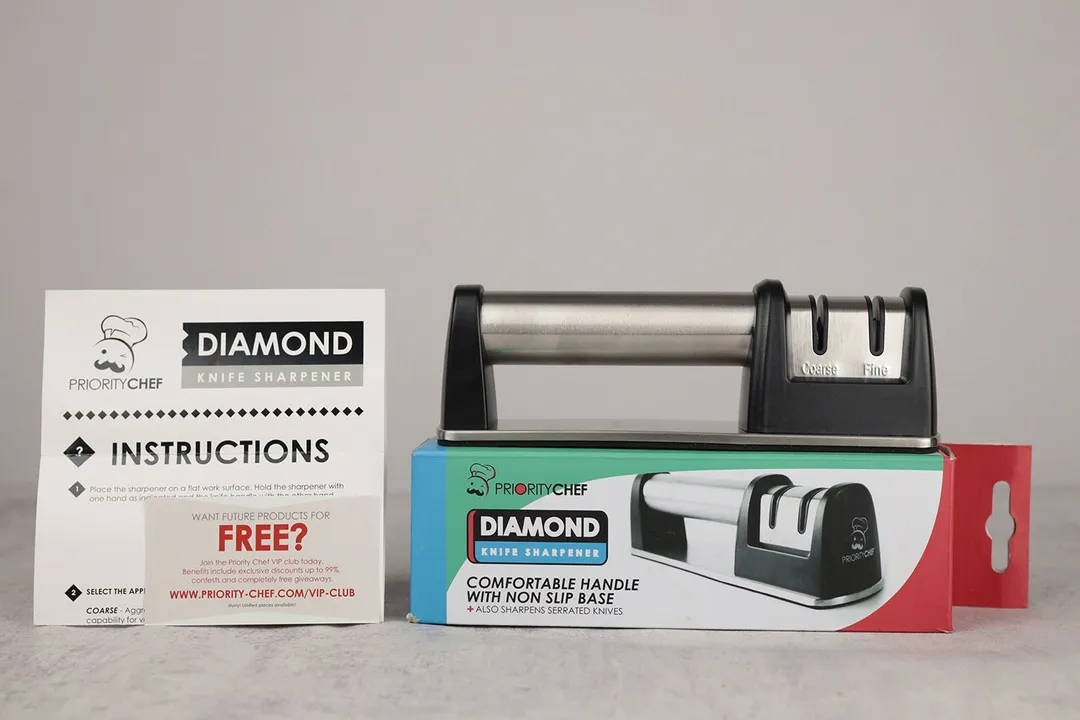
Dimensions
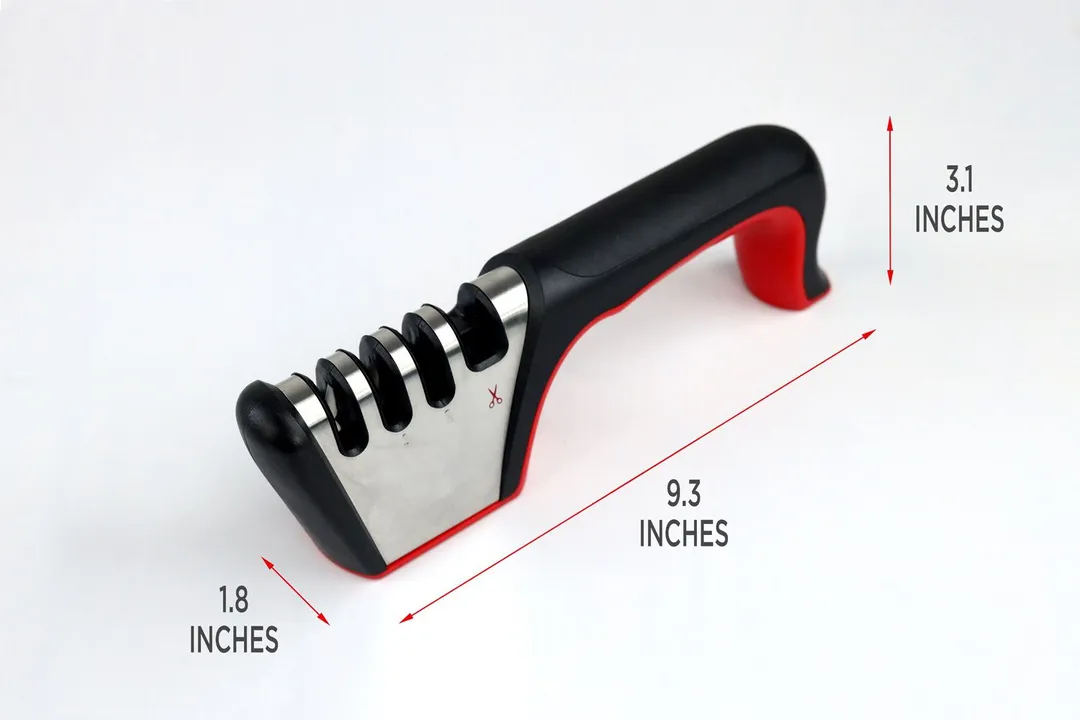
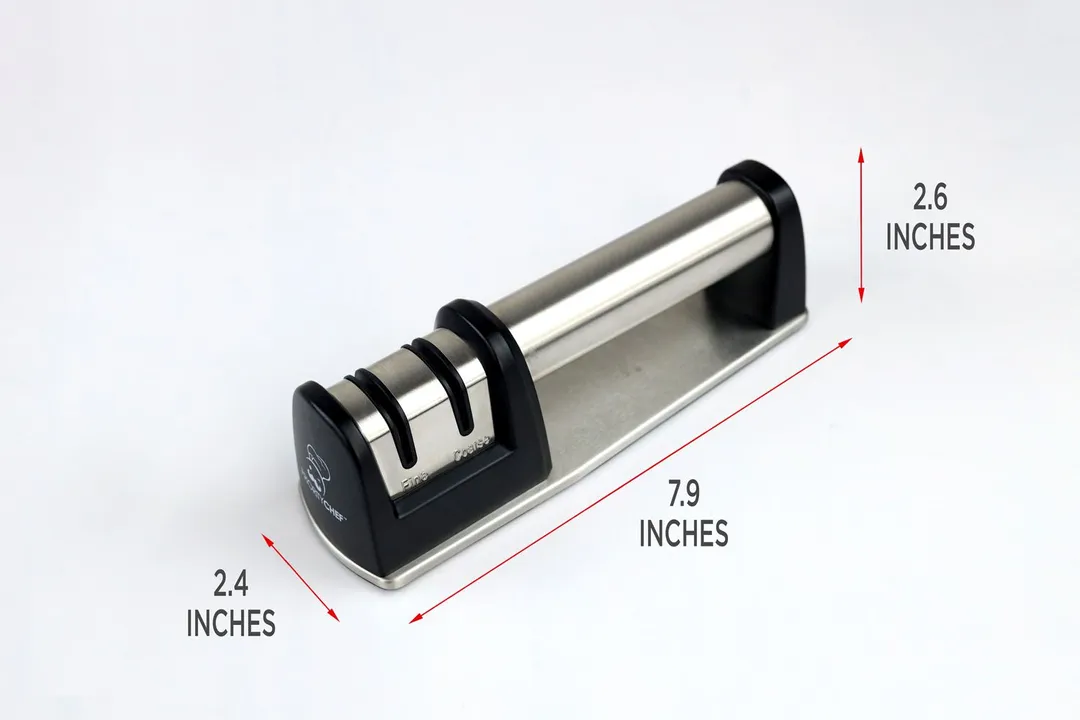
Build Quality
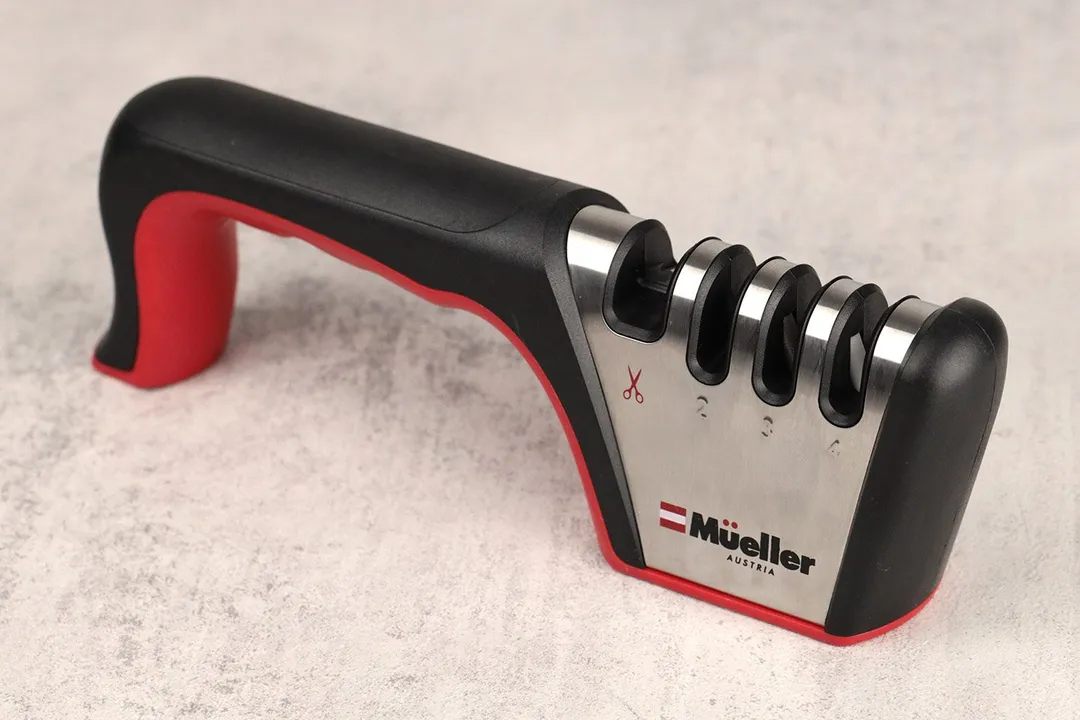
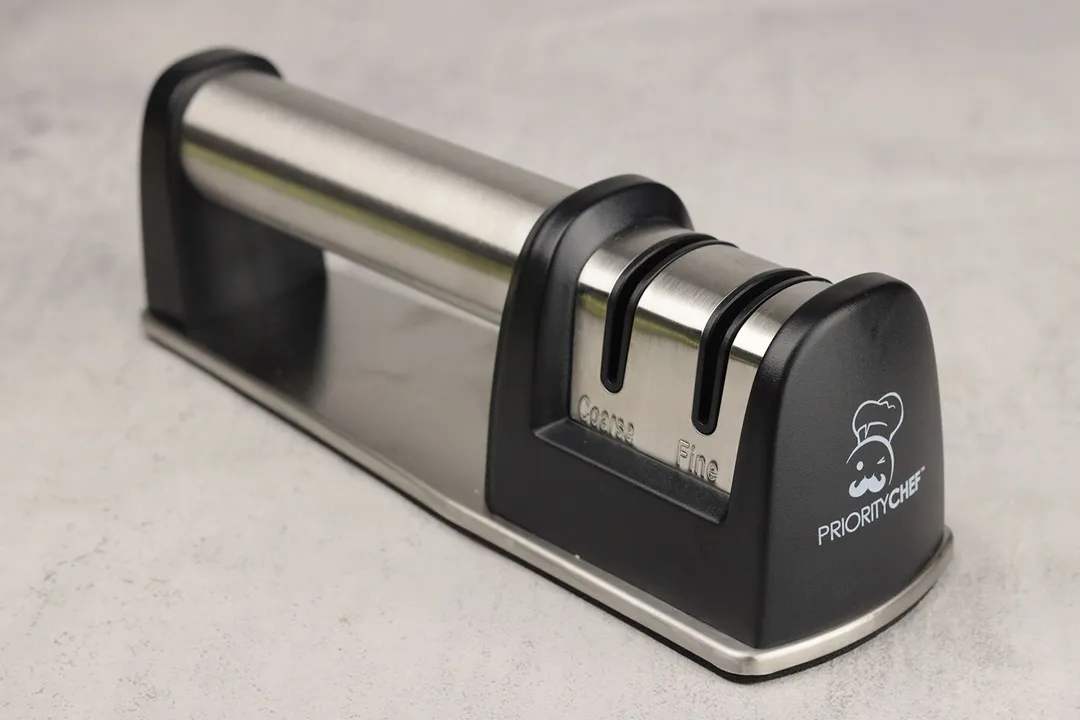
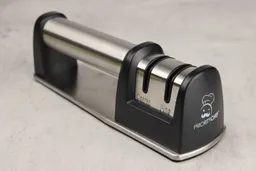

Working Section
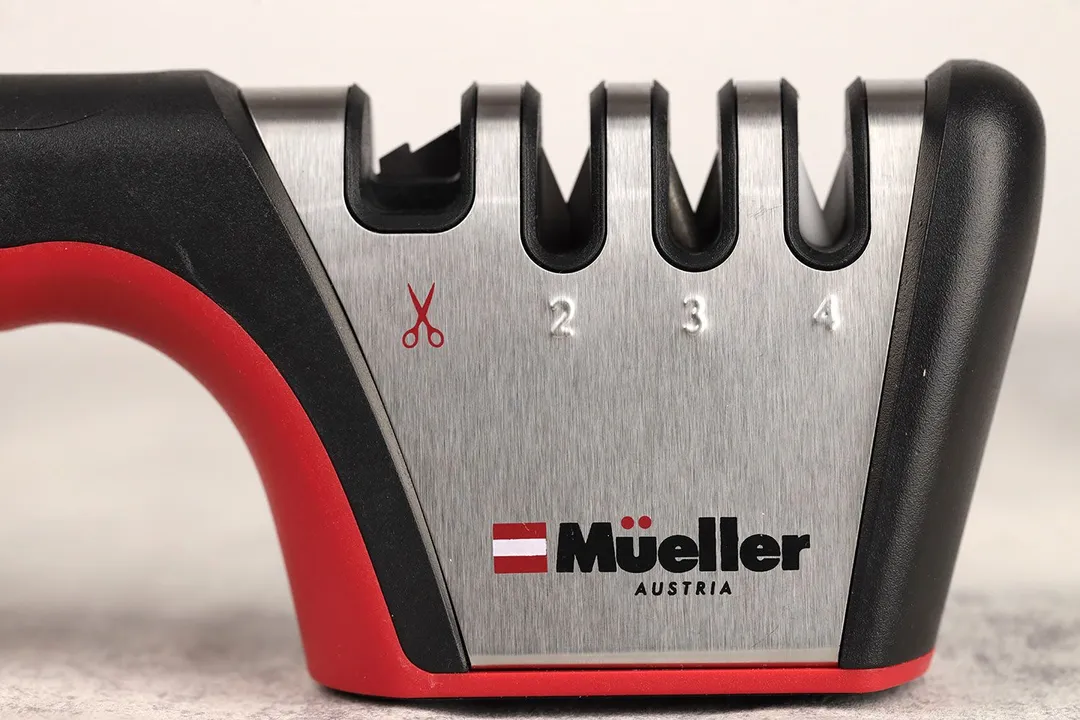
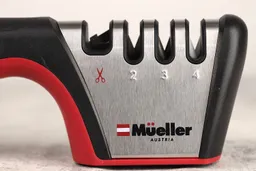
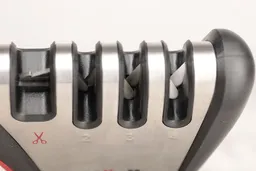
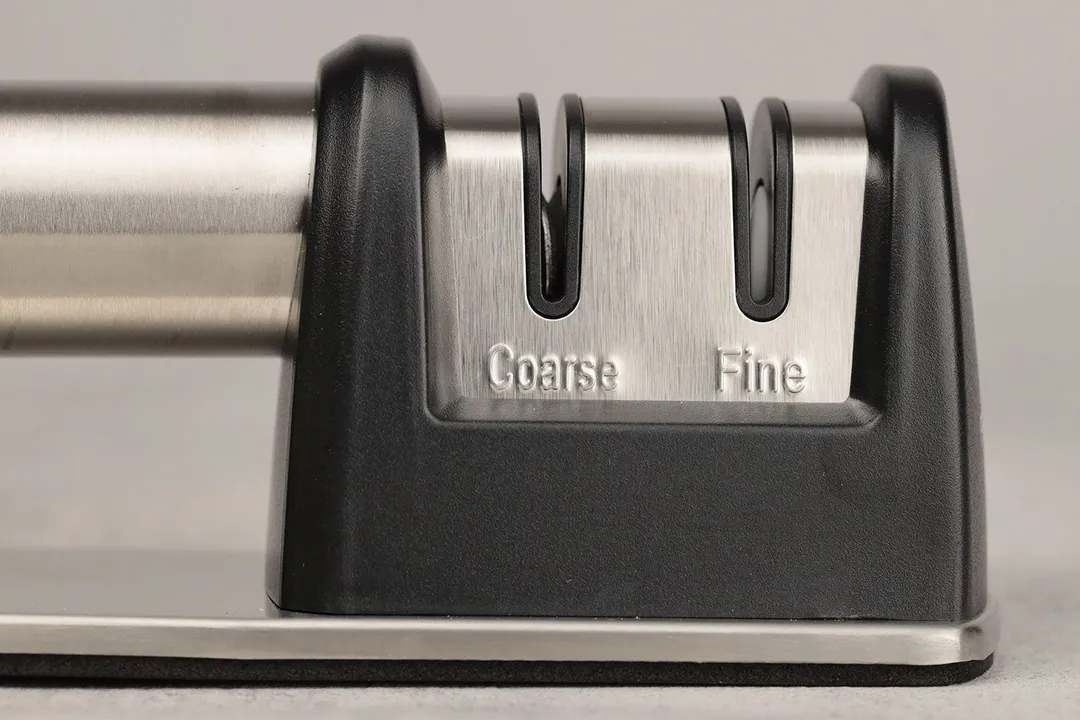
Base

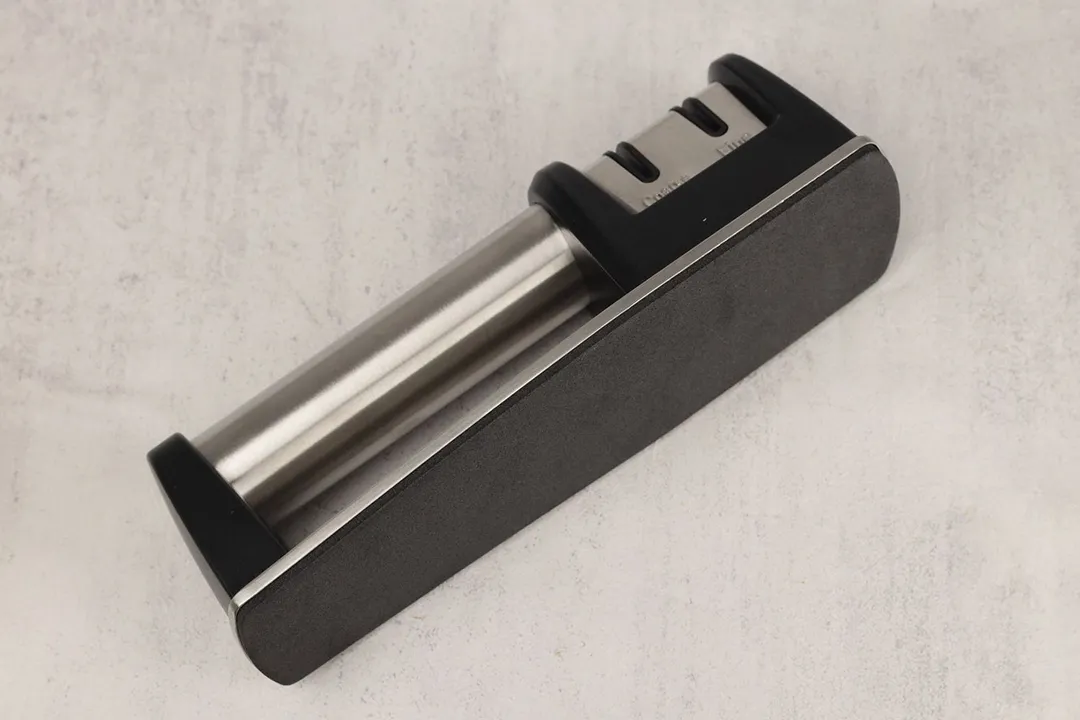
Grip
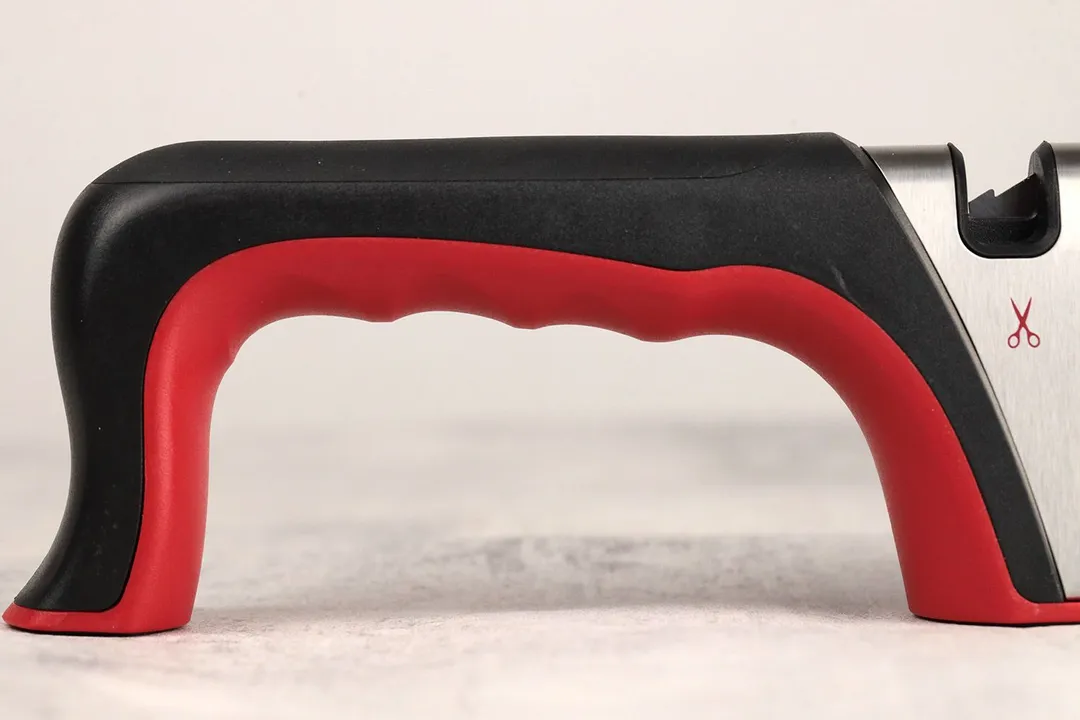
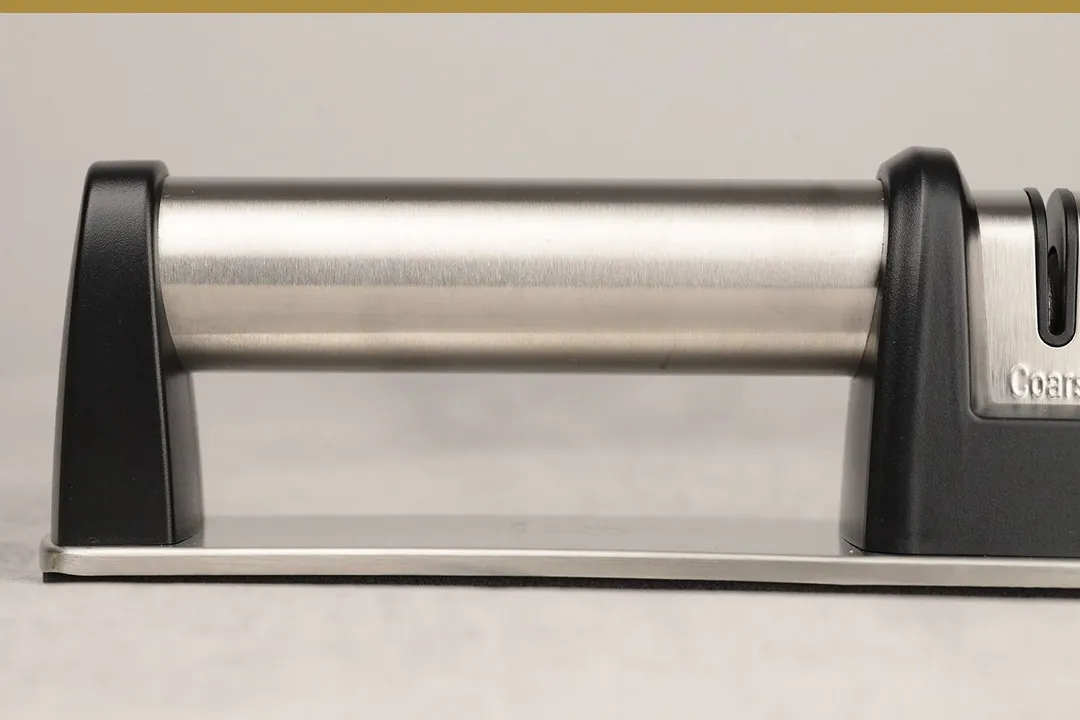
Usability
Slot Arrangement
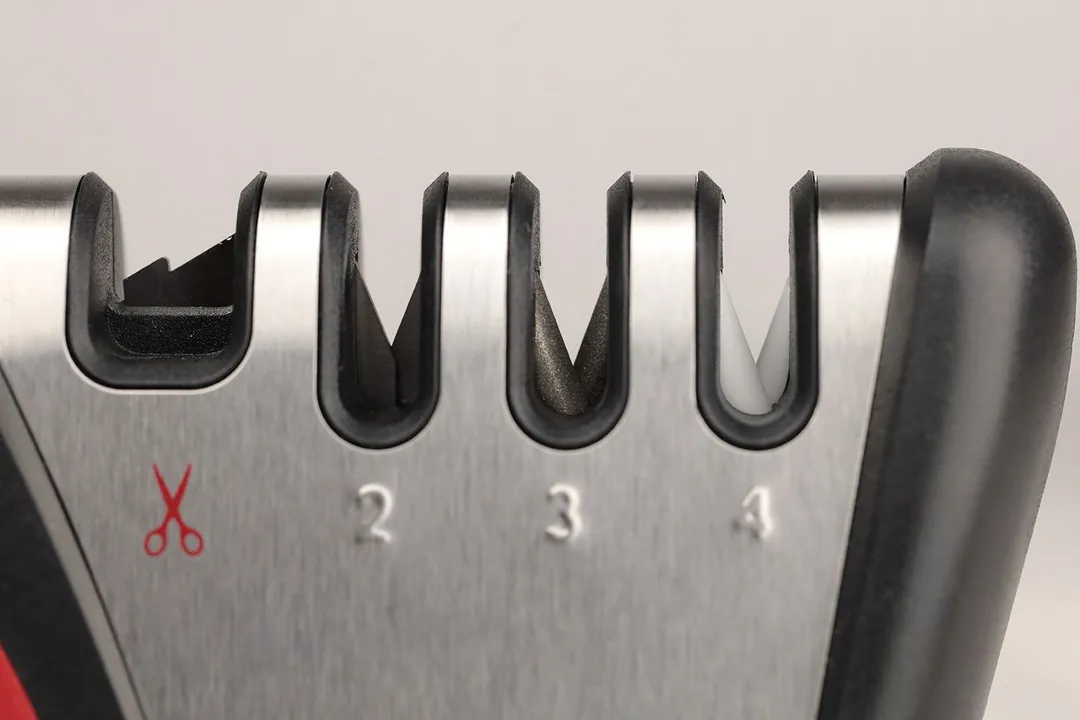

Insertion
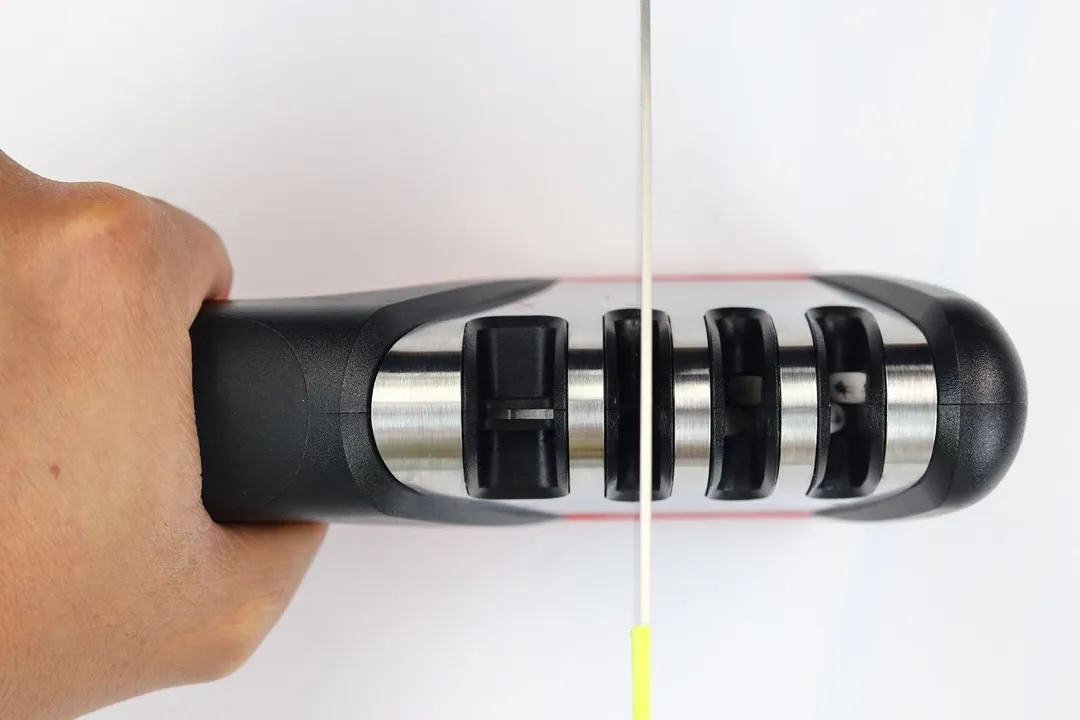
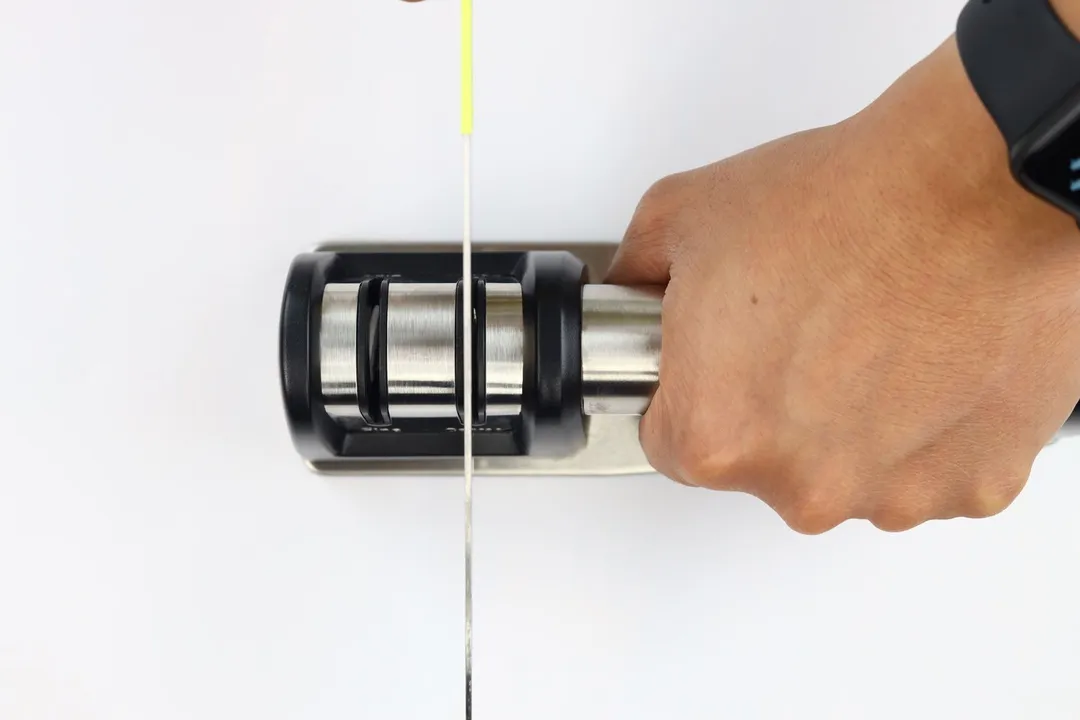
Pulling Through
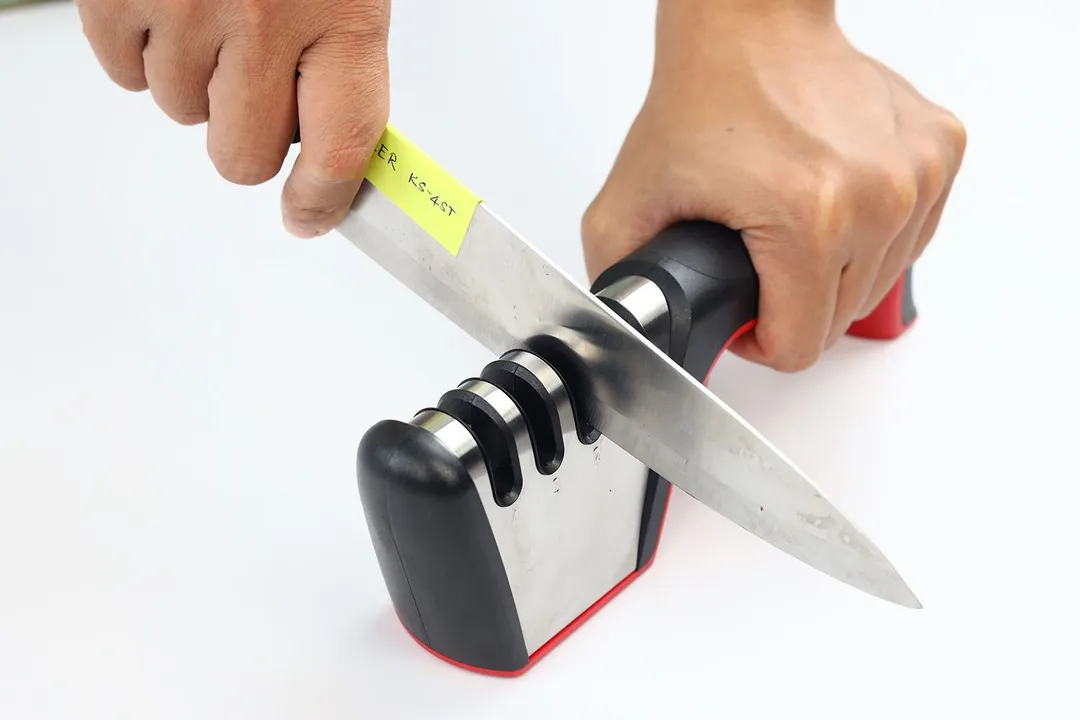
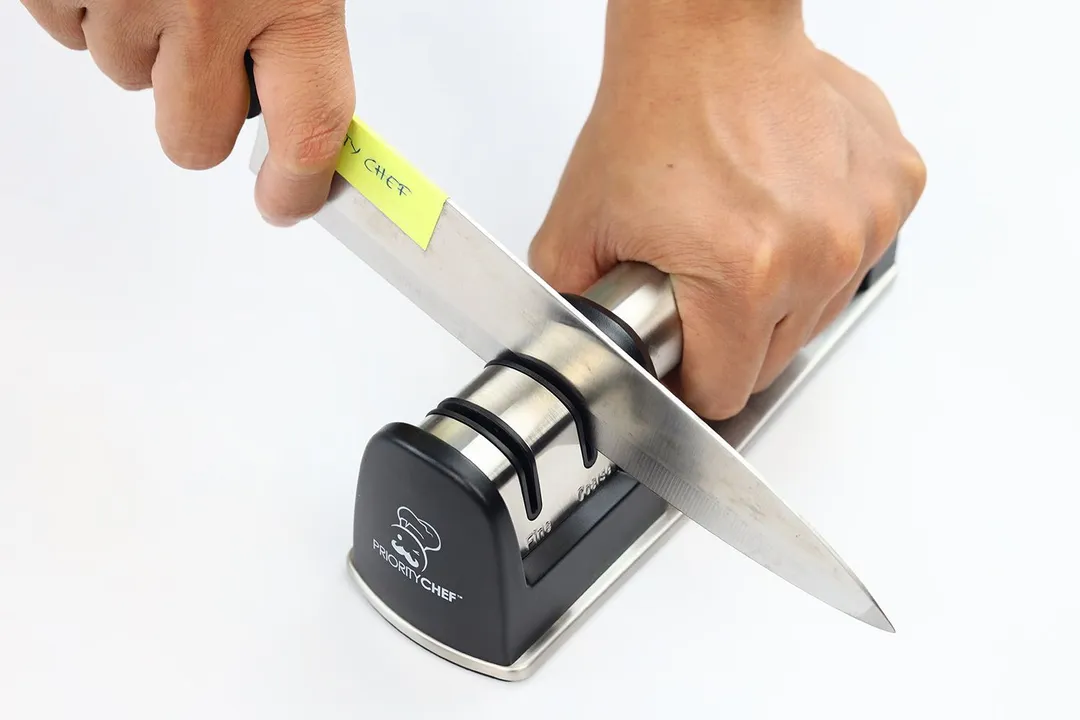
Stability on a Clean Surface
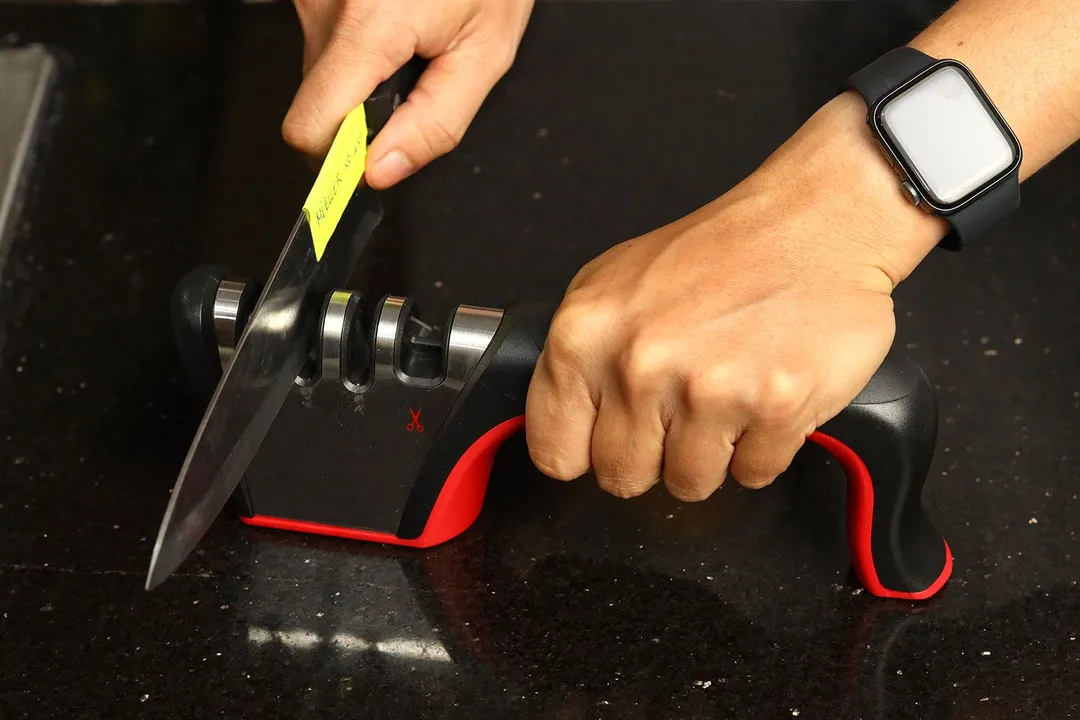
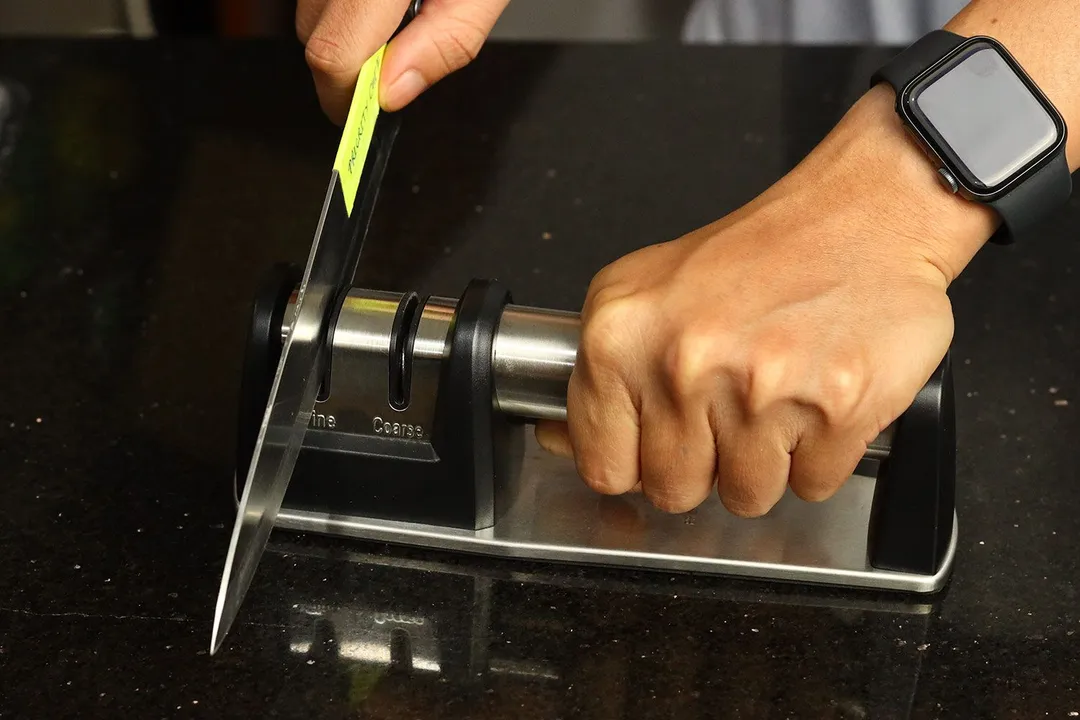
Stability on a Wet and Dirty Surface


Behind the Comparison
Anh Ngo is a writer with 9 years experience at different media outlets, covering from public news and events to product testing and analysis. At HealthyKitchen101, she works across different departments, communicating closely with its network of writers, editors, and health, tech, and search engine experts to provide a meaningful and pleasant reading experience for visitors.
Lap is Head of the Research, Testing, and Review Team (RTR Team) at HealthyKitchen101.com, where he directs and supervises the testing of kitchen gadgets and appliances.
Nguyen Ntk is a graphic designer, photographer, and videographer whose philosophy centers around respecting and celebrating the beauty of reality. Through his lenses, Nguyen strives to capture the true essence of objects and events, showcasing and highlighting authentic features without distortion or exaggeration.



